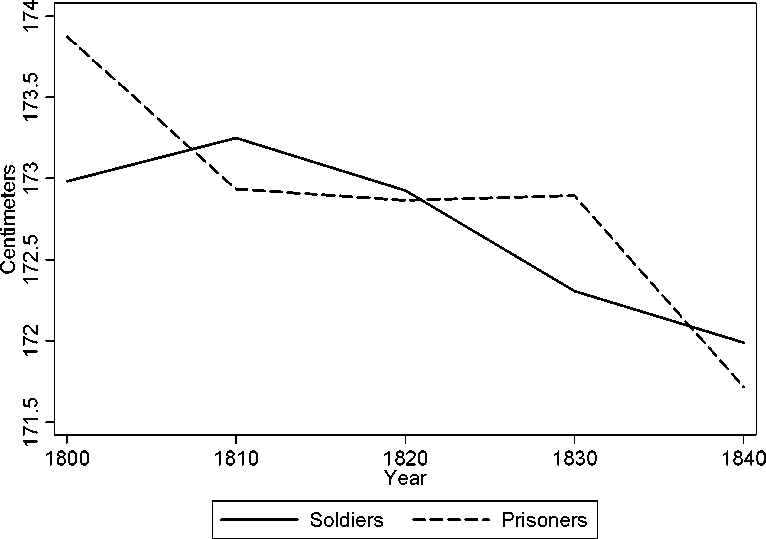23
Figure 3, Nineteenth Century Soldier and Prisoner Statures by Birth Decade

Source: See Tables 4 and 5.
Three general patterns emerge when comparing 19th century white soldier and
prisoner statures. First, stature comparisons by age and birth year demonstrate that
soldiers and prisoners reached about the same terminal statures (Figures 2 and 3). The
majority of soldiers were from the agricultural class, that socioeconomic group that
received better nutrition allocations and lived in rural environments, where infectious
disease was less easily propagated (Lee, 1997). Early 19th century agriculture was in the
early stages of commercialization, and the majority of Northeastern farmers lived on self-
sufficient family farm units (Carson, 2008, p. 349). Prisoners were also taller because
More intriguing information
1. Om Økonomi, matematik og videnskabelighed - et bud på provokation2. The name is absent
3. Achieving the MDGs – A Note
4. The Evolution
5. AN IMPROVED 2D OPTICAL FLOW SENSOR FOR MOTION SEGMENTATION
6. DEVELOPING COLLABORATION IN RURAL POLICY: LESSONS FROM A STATE RURAL DEVELOPMENT COUNCIL
7. New urban settlements in Belarus: some trends and changes
8. Equity Markets and Economic Development: What Do We Know
9. The migration of unskilled youth: Is there any wage gain?
10. On the job rotation problem